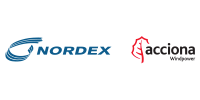Back to the programme overview  Print
Print
09:00 - 10:30 Cold climate issues in resource assessment
Resource assessment


Room: Hall G2
Sites subject to cold climate not only have temperatures outside the normal limits of standard wind turbines but also atmospheric icing conditions which are frequent and may account for a significant loss in annual production. This session addresses the most recent advancements in the field of atmospheric icing effects on wind resource yield assessment. Assessing, measuring and estimating icing losses in the resource assessment phase of a project is of crucial importance for the successful business case of a wind farm in cold climates. Icing of the rotor blades can significantly reduce the energy yield of a wind farm up to 10% or more of the annual production and it also influences wind measurements by reducing availability.
You attended this session?
Learning objectives
- Learn state-of-the-art measurement techniques and data analysis approaches for cold climate sites and therefore decrease the uncertainty in yield assessments;
- Discover the latest findings from over 20 sites and 100 met mast years of data in cold climates from Scandinavia and Germany;
- Learn to execute more reliable pre-construction energy yield assessments in cold climate sites.


Timo Karlsson
VTT Technical Research Centre of Finland,
Validation of remote sensing methods for detecting icing conditions

Carla Ribeiro
Head of Department, Project Development, DNV GL, United Kingdom
Icing losses, what can we learn from production and meteorological data

Martin Strack
Manager Site and Energy Assessment, Deutsche WindGuard Consulting GmbH, Germany
Big data approach of wind resource and operational data analysis in cold climate

Stefano Grassi
ETH Zurich, Switzerland
Generation and validation of spatial distribution of hourly wind speed time-series using machine-learning

Øyvind Byrkjedal
R&D Manager, Kjeller Vindteknikk, Norway
New advances in icing measurements and icing predictions




Follow EWEA on: